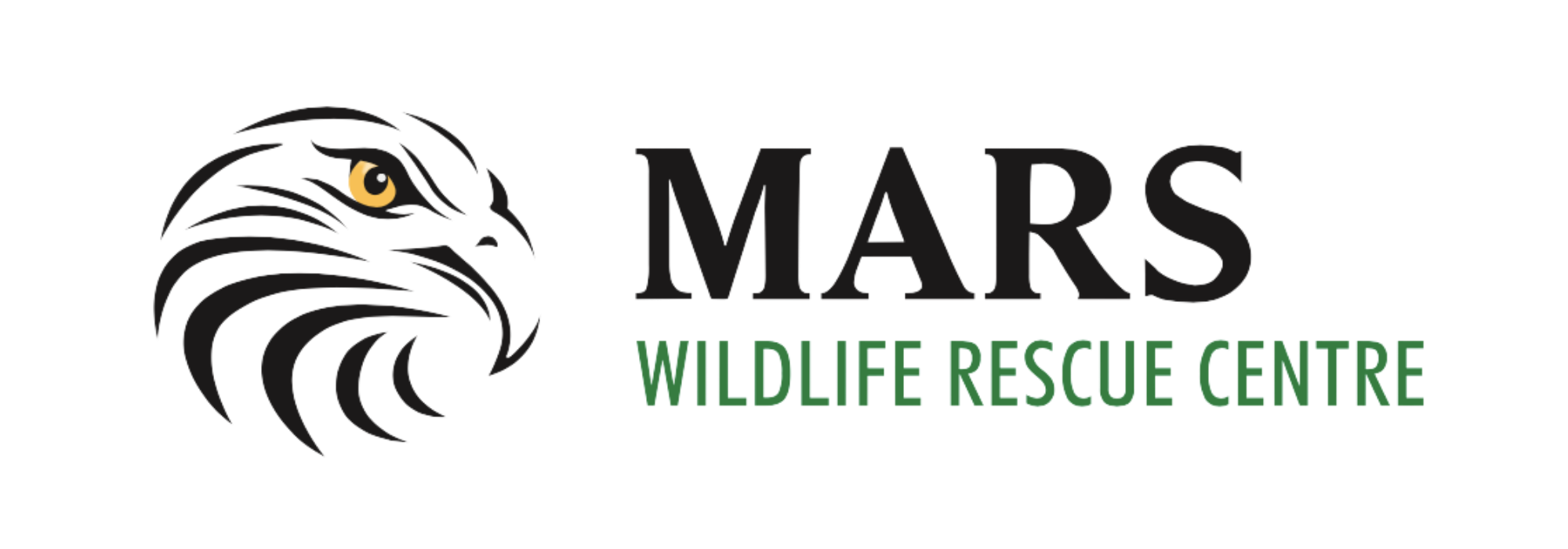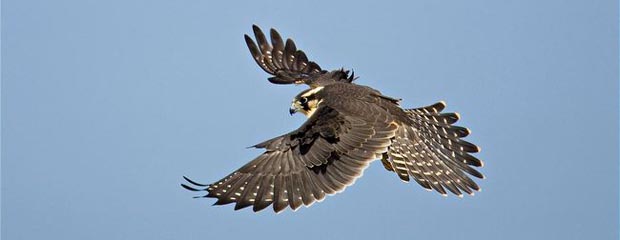by Maj Birch, MARS Wildlife Centre Manager
In late June we received a phone call from Bob Staniforth in Stories Beach about a bird that he found at the bottom of his tree. He said he thought it was a young hawk. I asked him if he could see the nest or if there was any signs of activity around the tree. He told me they were large firs and that he couldn’t see any signs of anything, nor had he noticed activity before. I asked him to bring the bird down to our centre.
When Bob arrived, and opened the box that he was carrying, I was amazed to see a Grey fuzzy ball of fluff with black eyes and sharp beak and talons looking back at me. “You have found a falcon here” I exclaimed. “Notice the dark eyes and the small “tooth-like” projection on the beak. It is probably a Merlin, since they are pretty common to this area. Just then the small fuzzy creature called the familiar “KILLY-KILLY-Kee” and confirmed my suspicions. Indeed, we have just received our first baby Merlin Falcon.
S/He appeared to be in good health and so I quickly defrosted some heart meat and offered a few small pieces. Hungrily, the little falcon snatched the meat from the tweezers. Quickly I offered some more food that was greedily consumed. After completing the obligatory forms and getting a weight on our newest patient, we placed the bird in a small cage with a nest made of towels and a basket. Then began the search to find out if we could replace the bird back into the nest. Corey, our summer student and I went to Bob’s house later that day to see if we could find any sign of activity. We watched and listened for over an hour, but it was very quiet.
I phoned Robin Campbell from NIWRA to ask if he had any success replacing falcons back in their nest. He gave no suggestions, but wished me good luck. I contacted Pat Browne-Clayton, our C.O. Not much more info, but he did give me the name of a fellow who had a tree service business. I phoned Doug Innes, a local naturalist. Doug had recently been here to record the songs of two birds to help with Identification. I asked if he would be able to come out and record this little bird when hungry, thinking that a parent bird would surely respond to a baby’s cries for food. Besides a full belly doesn’t make much noise.
Fortunately Doug and his wife Marion are always willing to go on another birding adventure. They brought their rising bread along, since Marion had to punch it down again before they would be able to get back home. When they arrived, the small falcon was very noisy, since I had not given food for just this moment. While Doug donned his earphones, recorder, and set up the unidirectional parabolic microphone, Marion dealt with the bread and I prepared a meal for the Merlin. The hungry little bird performed beautifully, and Doug was able to capture several cries for food, which Doug played back for us with crystal clarity. Included were the sounds of the airplane and house-fly flying overhead!!!
I gave Doug directions to Bob’s House and he and Marion headed out there after baking the bread. Doug had taken a recording of an adult calling and went around to the neighbors asking if anyone had heard any sounds like these. Several people confirmed that they had. He played the recording of the hungry baby, near the tree where it was found. But no luck – nothing happened. After an hour Doug and Marion went home. Shortly after they left, Bob phones me again and tells me that he heard and saw an adult Merlin fly through nearby trees. It attacked a small bird and then flew directly to the tree that we thought had the nest. The bird stayed and didn’t fly out. That confirmed it – the nest was there!
I then phoned Steve Harding of Timberwolf Tree Services and asked if he would be interested in helping us with a little problem. He immediately said yes. We waited a few days more when Steve was able to help and then on July 1st we headed to Stories Beach with our small charge. Bob and Steve met us there. Steve had lots of ropes, harness, climbing boots, and 2 walkie-talkies so we could communicate once he was up the tree. We watched from a distance as he climbed the tree so not to be hit by falling debris from the large 2nd growth fir.
Twenty feet from the top and Steve reported no sign of the nest. He asked if they nested close to the top. Since this was my first time to try to find a Merlin nest, I had only the books that I had read to guide us. One book had said that the parents fiercely defend the nest. Suddenly, like a bullet, a Merlin appeared and began flying in and out of the top of the tree, screaming. Steve continued the search.
Eight feet from the top of the big fir, the nest was visible. But it was perched precariously on a branch, barely hanging on. Steve reported two small grey babies were in the nest, but he was afraid to get closer in case the whole nest came down. We suggested sending up some twine to secure the nest. As Steve was tying the nest, one of the babies jumped. We watched helplessly as he fell to the ground, 60 feet below and snapped his neck. He was dead within a minute. We were heartsick. Our feeling of elation at putting the baby back was shattered by the death of the other healthy sibling.
Undaunted, Steve continued and said we should send the box with the baby up, now that the nest was secure. He lowered a rope and it was attached to the box and we gave the signal to haul it up. At last the baby was returned to its nest. Steve descended from the giant tree, and with a bittersweet smile packed up his equipment. We were all glad for the experience but the death of the other one overshadowed our joy. Next time, if there ever is one, we will know what to expect, and spread a sheet around the bottom as a precaution.
Two days later, I received a call from Bob stating that he found another little bird at the bottom of the tree. Resignedly I said to bring it in. This one, unfortunately could not be returned to the nest. It was the 3rd sibling, but it had fractured the tibia upon falling and so it needed Xray and surgery to repair it. Dr. Ken Seaman of Puntledge Vet Clinic was on hand that evening to see the bird we arranged for surgery the next day. He pinned the leg and attached a rather awkward splint device to the young bird’s leg. It would allow for cleaning the wound site. We gave antibiotics for several days hidden in the bird’s “mouse burgers”, an imitation mouse made of heart and calcium and vitamins rolled in hair to resemble a small rodent – yummmm!
The young Merlin spent the days out in our tree house, alone with forest noises and with another young Merlin in the Mews, who arrived shortly after. After 2 weeks the pin was removed and physiotherapy continued for another week to ensure the bird was using it’s leg properly. I then sent it to OWL in the lower mainland for flight training, strengthening and “live” testing.
Live testing for owls consists of putting the bird into a pen with a bare floor and a live white mouse. Once it is capable of killing it’s prey successfully, a dark mouse is used. Then after passing that test, leaf litter is strewn about the cage, allowing the mouse to hide and giving the bird more of a challenge. Finally it must be able to find the dark mouse, hiding under the litter, in the dark. With Merlins and other accipiters that prefer birds in their diet, falconry techniques are used. The birds must be able to catch a bird on the wing, in order to pass the test. At present both Merlins are being tested with a falconer, prior to release.
We have sent two owls to over to OWL in the lower mainland for live testing this year. A Barred Owl that is the young bird that appears on our New Poster was returned banded and released September 11th and a Sawwhet Owl that was banded and released in Sayward earlier in the year.
Dedicated to the memory of Doug Innes – December 2000

